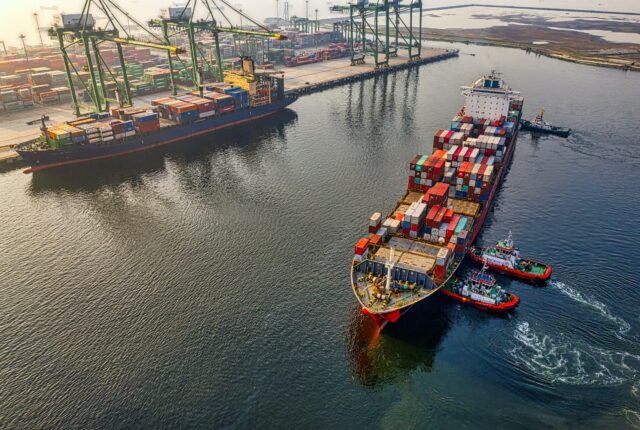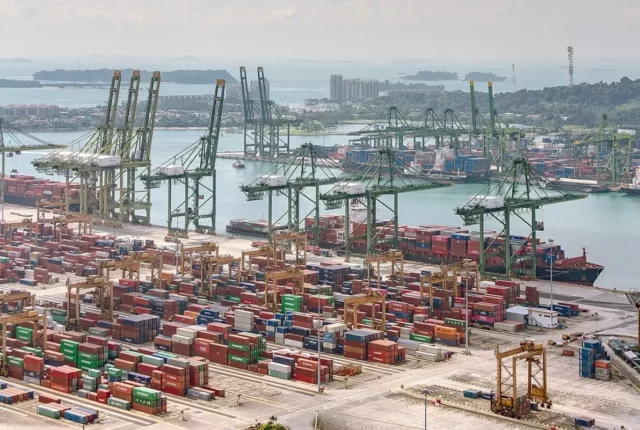
Supply Chain Optimization: Maximizing Efficiency and Minimizing Costs
In today’s competitive business landscape, supply chain optimization plays a pivotal role in ensuring the success and profitability of organizations. The art of supply chain optimization revolves around maximizing efficiency and minimizing costs, allowing businesses to deliver products and services in a timely manner while maintaining a competitive edge. In this article, we will explore the various strategies, best practices, and key considerations that can help organizations unlock the full potential of their supply chains and achieve sustainable growth.
The Importance of Supply Chain Optimization
Supply chain optimization is not just a buzzword; it is a critical aspect of any business operation. By optimizing the supply chain, organizations can streamline processes, reduce lead times, minimize inventory holding costs, and enhance customer satisfaction. When done right, supply chain optimization can lead to significant cost savings, improved operational efficiency, and increased profitability. It allows businesses to respond quickly to changing market dynamics, meet customer demands, and stay ahead of the competition.
Understanding the Supply Chain
Before delving into the intricacies of supply chain optimization, it is essential to have a clear understanding of the supply chain itself. The supply chain encompasses the end-to-end flow of goods, services, information, and capital, starting from the procurement of raw materials to the delivery of the final product to the end consumer. It involves a network of suppliers, manufacturers, distributors, retailers, and customers, all interconnected through various processes and activities.
Key Components of the Supply Chain
To optimize the supply chain effectively, organizations must grasp the key components that form its backbone. These components include:
- Procurement: The process of sourcing and acquiring raw materials, components, and services from suppliers.
- Production: The transformation of raw materials into finished goods through manufacturing or assembly processes.
- Inventory Management: The management of stock levels to ensure the right products are available at the right time while minimizing carrying costs.
- Warehousing and Distribution: The storage, handling, and transportation of goods from manufacturing facilities to distribution centers and ultimately to customers.
- Demand Planning: The estimation of future demand for products or services to optimize production and inventory levels.
- Logistics: The coordination and execution of transportation activities to ensure timely delivery of products to customers.
- Customer Service: The provision of post-sales support, order tracking, and resolution of customer queries or issues.
Strategies for Supply Chain Optimization
Achieving supply chain optimization requires a comprehensive and holistic approach that encompasses various strategies and best practices. Here are some key strategies that can help organizations maximize efficiency and minimize costs in their supply chains:
- Embrace Technology and Automation
Leveraging advanced technologies such as artificial intelligence, machine learning, and automation can revolutionize the supply chain landscape. These technologies can enable real-time visibility, predictive analytics, demand forecasting, and process automation, leading to enhanced efficiency and decision-making.
- Collaborate with Suppliers and Partners
Establishing strong partnerships and collaborations with suppliers, manufacturers, distributors, and logistics providers can lead to improved coordination, reduced lead times, and cost optimization. By working together, organizations can share information, synchronize activities, and collectively drive supply chain performance.
- Optimize Inventory Management
Inventory management is a critical aspect of supply chain optimization. By adopting efficient inventory control techniques such as just-in-time (JIT) inventory, economic order quantity (EOQ), and vendor-managed inventory (VMI), organizations can minimize carrying costs, reduce stockouts, and improve overall inventory turnover.
- Implement Lean Manufacturing Principles
Applying lean manufacturing principles, such as waste reduction, process standardization, and continuous improvement, can streamline production processes, eliminate bottlenecks, and enhance overall productivity. Lean practices promote efficiency, quality, and cost savings throughout the manufacturing process.
- Invest in Supply Chain Analytics
Data-driven decision-making is vital for effective supply chain optimization. By investing in supply chain analytics tools and systems, organizations can gain valuable insights into their operations, identify areas for improvement, and make informed decisions to optimize performance.
- Enhance Supply Chain Visibility
Having end-to-end visibility into the supply chain is crucial for identifying bottlenecks, predicting disruptions, and proactively managing risks. By leveraging technologies such as IoT sensors, RFID tracking, and cloud-based platforms, organizations can achieve real-time visibility and transparency across their supply networks.
FAQs
1: What is supply chain optimization?
Supply chain optimization refers to the process of maximizing efficiency and minimizing costs across the entire supply chain network. It involves strategically managing procurement, production, inventory, logistics, and customer service activities to achieve operational excellence and competitive advantage.
2: How does supply chain optimization benefit businesses?
Supply chain optimization offers several benefits to businesses, including cost savings, improved operational efficiency, enhanced customer satisfaction, faster time-to-market, and increased profitability. It allows organizations to optimize their resources, minimize waste, and respond quickly to market changes and customer demands.
3: What are the key challenges in supply chain optimization?
Supply chain optimization can be challenging due to factors such as complex global networks, volatile market conditions, demand variability, supply disruptions, and technological complexities. Organizations must navigate these challenges by adopting agile strategies, leveraging technology, and fostering collaboration with supply chain partners.
4: How can technology drive supply chain optimization?
Technology plays a pivotal role in supply chain optimization by enabling real-time visibility, predictive analytics, process automation, and data-driven decision-making. Advanced technologies such as AI, machine learning, and cloud computing empower organizations to optimize their supply chain operations and drive sustainable growth.
5: What role does collaboration play in supply chain optimization?
Collaboration with suppliers, manufacturers, distributors, and logistics providers is essential for effective supply chain optimization. By fostering strong partnerships and sharing information, organizations can improve coordination, synchronize activities, and collectively enhance supply chain performance.
6: How can organizations measure the success of their supply chain optimization efforts?
Organizations can measure the success of their supply chain optimization efforts through key performance indicators (KPIs) such as inventory turnover, on-time delivery, order fill rate, supply chain cycle time, and customer satisfaction. By tracking these metrics, organizations can assess their performance, identify areas for improvement, and drive continuous optimization.
Conclusion
Supply chain optimization is a multifaceted discipline that requires a deep understanding of the supply chain ecosystem and the implementation of effective strategies. By embracing technology, collaborating with partners, optimizing inventory management, implementing lean practices, investing in analytics, and enhancing supply chain visibility, organizations can unlock the true potential of their supply chains. With a well-optimized supply chain, businesses can achieve maximum efficiency, minimize costs, and gain a competitive edge in today’s dynamic marketplace.






